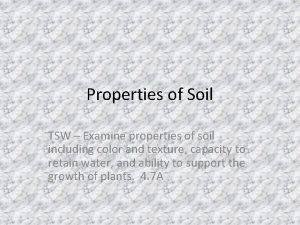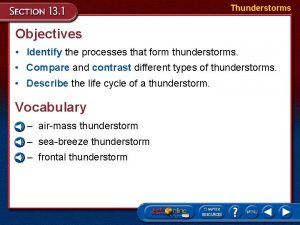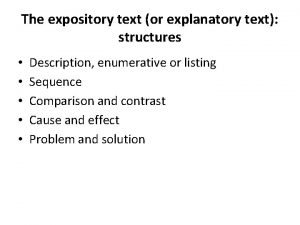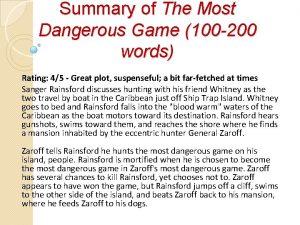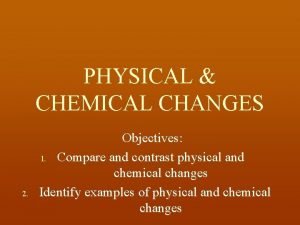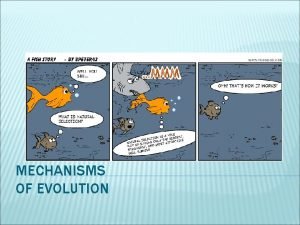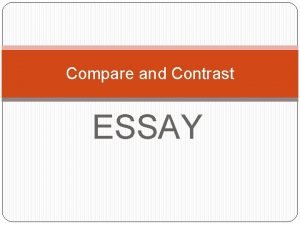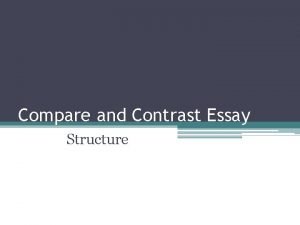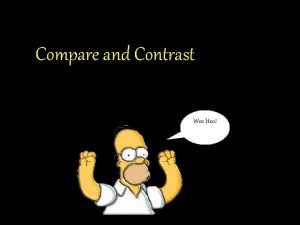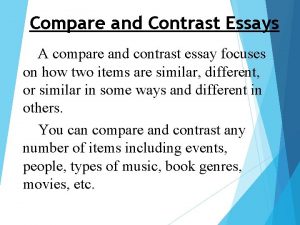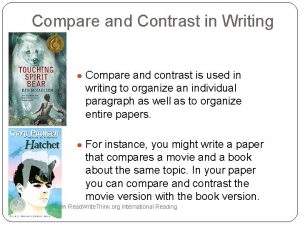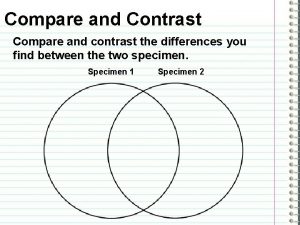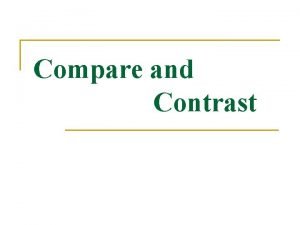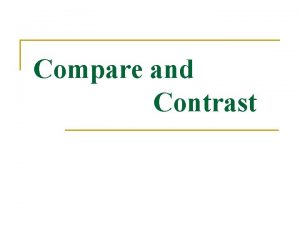Cell Transport TSW compare and contrast the various
















- Slides: 16

Cell Transport TSW compare and contrast the various methods molecules move across the cell membrane

Prokaryotic Cells �Key Point: No nucleus or membrane – bound organelles �Example: Bacteria

Eukaryotic Cells �Key Point: Has a nucleus and membrane-bound organelles �Examples: Plant, Animal, Fungi, Protists

Cell Membranes �Regulate what enters and leaves the cell �Phospholipid bilayer (phosphate heads, lipid tails, protein channels)

Diffusion �Movement of particles from an area of higher concentration to an area of lower concentration �Particles spread out until the concentration is equal

Osmosis �Diffusion of water through a selectively permeable membrane (cell membrane)

Isotonic Solution �ISO: equal �Concentration is equal on both sides of membrane

Hypertonic Solution �HYPER: greater �Solution has more solutes (particles) than the other side of membrane (inside the cell)

Hypotonic Solution �HYPO: less �Solution has less solutes (particles) than the other side of membrane (inside of cell)

Passive Transport �Movement along the concentration gradient �No ENERGY required!!! �EX: Diffusion & Osmosis

Facilitated Diffusion �Cell membrane channel proteins help move molecules across the membrane �EX: Glucose

Active Transport �Movement of molecules AGAINST the concentration gradient �Requires ENERGY!!!

Endocytosis �Taking materials into the cell by infoldings of the cell membrane

Phagocytosis �Endocytosis by surrounding a particle and packaging it in a food vacuole �Cell eating!!!

Pinocytosis �Tiny pockets from along cell membrane, fill with liquid, then pinch off forming vacuoles in cell �Cell Drinking!!!!

Exocytosis �Vacuole fuses with cell membrane, forcing contents of vacuole out of the cell �Cell removing molecules!!!
 Tsw death and axes
Tsw death and axes Tsw crime and punishment
Tsw crime and punishment Dry
Dry Cycle
Cycle Romeo and juliet and west side story comparison chart
Romeo and juliet and west side story comparison chart Albany movement
Albany movement Draw and label transverse wave
Draw and label transverse wave Spring tide position
Spring tide position Compare and contrast cold wave and wind chill factor
Compare and contrast cold wave and wind chill factor Explanatory text structure
Explanatory text structure Compare and contrast analog and digital forecasts.
Compare and contrast analog and digital forecasts. Tornado and hurricane venn diagram
Tornado and hurricane venn diagram The most dangerous game venn diagram rainsford and zaroff
The most dangerous game venn diagram rainsford and zaroff Compare and contrast transverse and longitudinal waves
Compare and contrast transverse and longitudinal waves Compare and contrast physical and chemical changes
Compare and contrast physical and chemical changes Compare and contrast gradualism and punctuated equilibrium
Compare and contrast gradualism and punctuated equilibrium Macbeth information
Macbeth information


